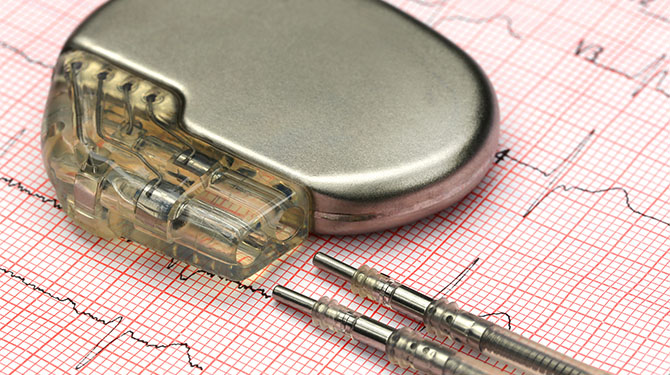
Our experienced cardiac electrophysiologists use implants and monitor devices to help ensure that the heart’s electrical system functions properly.
Some types of abnormal heart rhythms can only be treated effectively with an artificial pacemaker. The latest technology in pacemakers offer models that weigh only about 1.5 ounces and contain a lithium battery that can last up to 10 years. The pacemaker unit is implanted surgically beneath the skin just below the collarbone on the right side of the chest.
ICD’s are small automatic devices that can detect and treat arrhythmias in patients with ventricular tachycardia and ventricular fibrillation, where the heart beats dangerously fast. Today’s device consists of a generator slightly smaller than the size of a wallet attached to electrode catheters. The defribillator is surgically placed under or over chest or abdominal muscles, and the catheters are threaded through veins to permanent positions in the heart. The implanted defribillator monitors the heart rhythm and automatically detects and treats abnormal rhythm with electrical shock.
The implantable loop recorder, smaller than a pack of gum, is inserted just beneath the skin in the upper chest area. The recorder continuously monitors the rate and rhythm of the heart 24 hours a day. Episodes of fainting and other symptoms are recorded and can be played back later for detailed analysis.
The WATCHMAN Device is intended for percutaneous, transcatheter closure of the left atrial appendage (LAA). Patients with non-valvular atrial fibrillation who are at increased risk for stroke and systemic embolism, are not suitable for long term warfarin therapy, and seek a non-pharmacologic alternative may be eligible for a WATCHMAN Device. Learn more about this device.